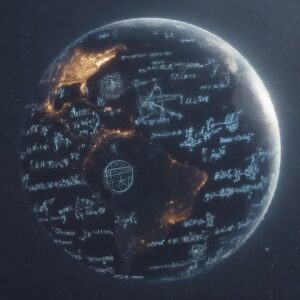Table of Contents
Introduction
Physics, the study of matter, energy, and the fundamental forces that govern the universe, has been a driving force behind numerous technological advancements and a deeper understanding of the world we live in. Throughout history, physicists and scientists have made groundbreaking discoveries that have revolutionized our perception of the cosmos. This article will explore some of the most significant historical physics discoveries that have left an indelible mark on the world.
Newton’s Laws of Motion and Universal Gravitation
One of the most influential figures in the history of physics is Sir Isaac Newton. In the 17th century, Newton formulated his laws of motion, which laid the foundation for classical mechanics. These laws describe the relationship between the motion of an object and the forces acting on it, providing a framework for understanding the dynamics of the physical world.
Newton’s law of universal gravitation was another monumental discovery. By postulating that every particle of matter attracts every other particle with a force proportional to their masses and inversely proportional to the square of the distance between them, Newton explained the force that keeps planets in orbit around the sun. This discovery not only explained celestial motions but also paved the way for advancements in space exploration.
Maxwell’s Equations and Electromagnetism
In the 19th century, James Clerk Maxwell unified the understanding of electricity and magnetism with the development of his famous equations. These equations describe the fundamental principles of electromagnetism, revealing the relationship between electric and magnetic fields. Maxwell’s work laid the groundwork for the development of technologies such as radio, television, and wireless communication.
The realization that light itself is an electromagnetic wave and that it travels at a constant speed further transformed our understanding of the nature of light. Maxwell’s equations not only advanced our technological capabilities but also contributed to the evolution of the theory of relativity.
Einstein’s Theory of Relativity
Albert Einstein’s groundbreaking theories of relativity, special and general, ushered in a new era in physics during the early 20th century. The special theory of relativity, published in 1905, redefined our understanding of space and time, introducing the concept of spacetime and demonstrating that the laws of physics are the same for all observers in uniform motion.
Einstein’s general theory of relativity, presented in 1915, expanded on these ideas by incorporating gravity into the framework of spacetime curvature. This theory successfully explained phenomena like the bending of light around massive objects, paving the way for a more accurate understanding of the cosmos. Einstein’s work has had a profound impact on technology, from the development of GPS systems to our understanding of the universe’s large-scale structure.
Quantum Mechanics
The early 20th century also saw the emergence of quantum mechanics, a revolutionary theory that describes the behavior of particles at the atomic and subatomic levels. Pioneered by physicists like Max Planck, Niels Bohr, Werner Heisenberg, and Erwin Schrödinger, quantum mechanics challenged classical physics and introduced the concept of wave-particle duality.
Quantum mechanics has led to countless technological advancements, including the development of semiconductors, lasers, and nuclear technologies. The field’s probabilistic nature and the concept of quantum entanglement have sparked philosophical debates and continue to be subjects of active research.
The Standard Model of Particle Physics
In the mid-20th century, physicists made significant strides in understanding the fundamental particles that make up the universe. The Standard Model of Particle Physics, developed during the 20th century, classifies and describes the interactions between elementary particles. This model successfully incorporates electromagnetism, the weak nuclear force, and the strong nuclear force, providing a comprehensive framework for particle physics.
The discovery of the Higgs boson in 2012 at CERN’s Large Hadron Collider was a crucial confirmation of the Standard Model, as the Higgs boson was the last missing piece predicted by the theory. The Standard Model has not only deepened our understanding of particle physics but has also played a crucial role in shaping our understanding of the early universe.
Conclusion
The history of physics is a tapestry woven with the threads of curiosity, intellect, and innovation. From Newton’s laws that govern everyday motion to Einstein’s theories that reshape our perception of space and time, each discovery has been a stepping stone towards a more profound understanding of the universe. The impact of these discoveries extends beyond theoretical physics, influencing technological advancements that shape our daily lives.
As we look to the future, the quest for knowledge continues. Physicists and scientists around the world are engaged in ongoing research, probing the mysteries of dark matter, dark energy, and the origins of the universe. The historical physics discoveries discussed in this article have not only changed the world in their respective times but also paved the way for the scientific endeavors that will undoubtedly shape the future of humanity.
